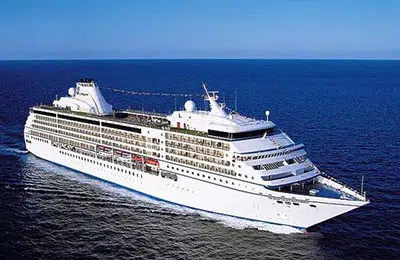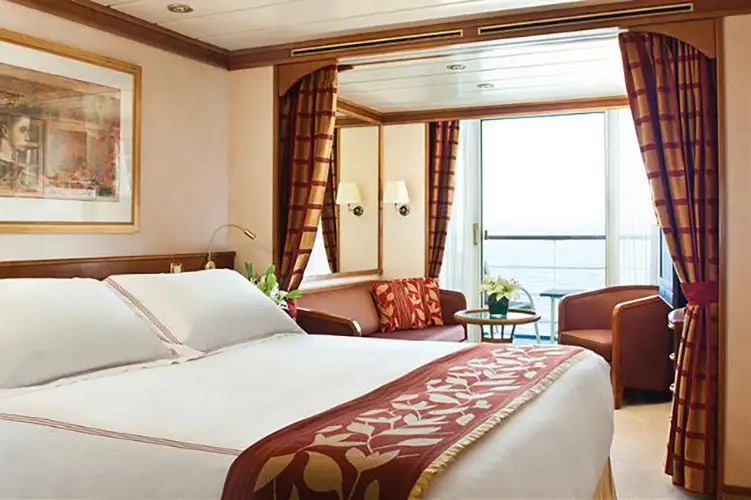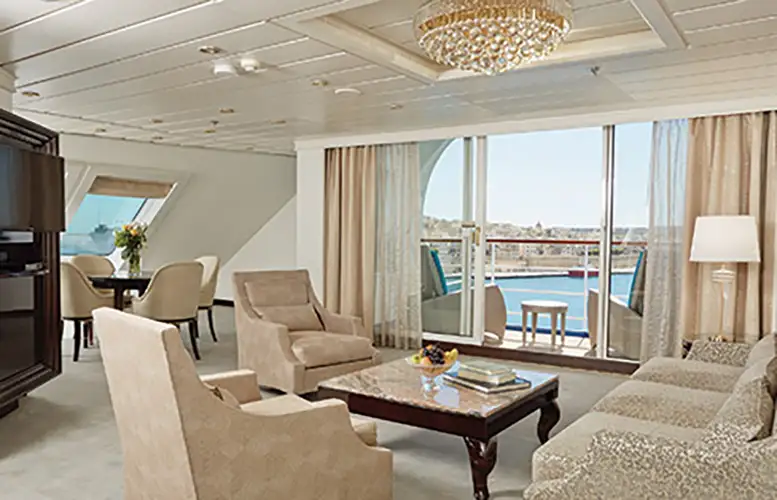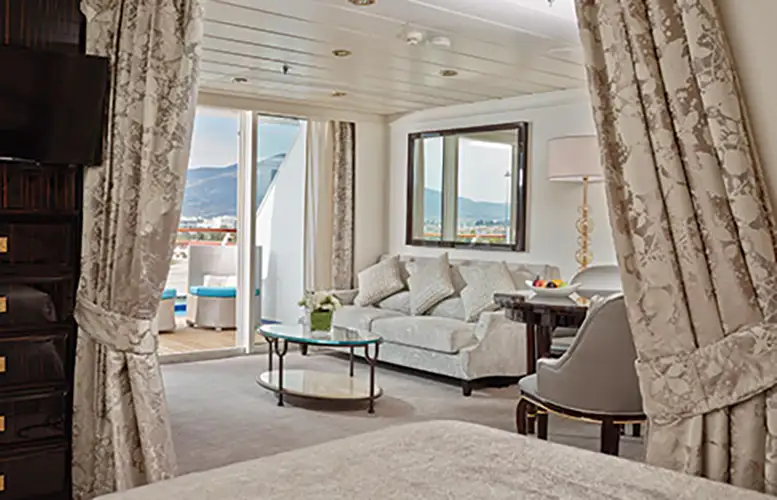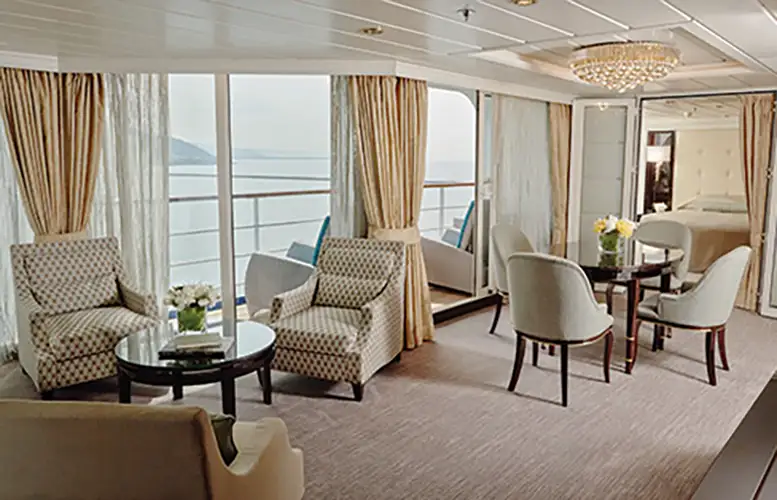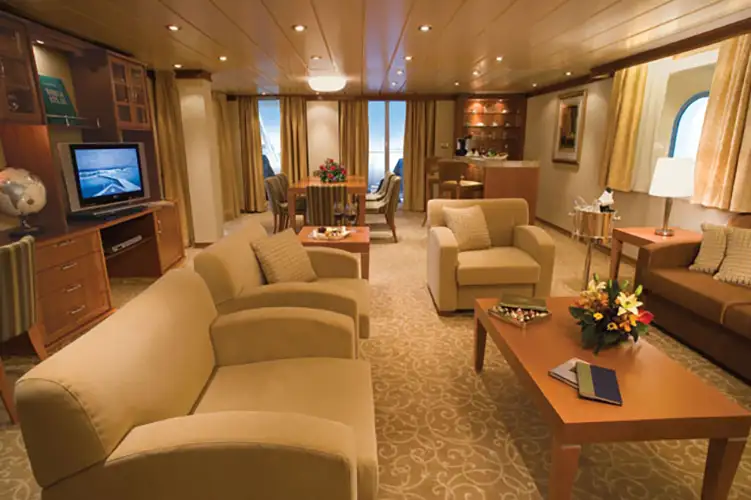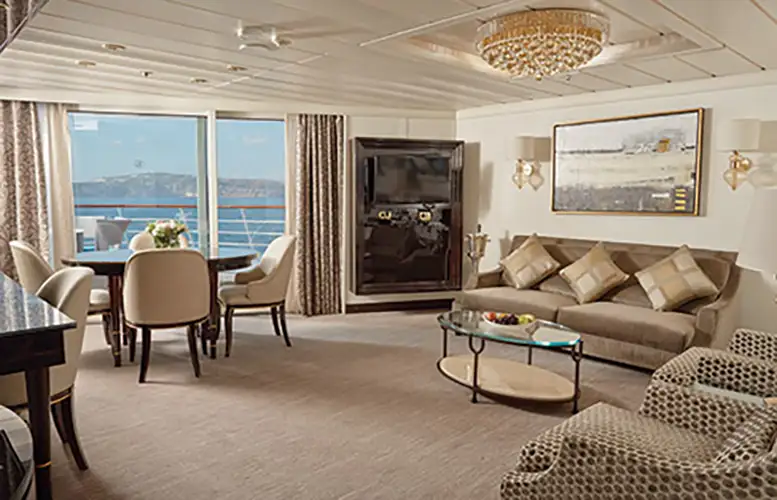Regent South America: 18 nights from Buenos Aires with Seven Seas Mariner
Feb 20, 2027
Argentina, Falkland Islands, Chile, Peru
Cruise itinerary
Departure Port: Buenos Aires ➞
Landing: Lima
-
Saturday, February 20, 2027 - 5:00 PMBuenos Aires
-
Sunday, February 21, 2027Navigation
-
Monday, February 22, 2027Navigation
-
Tuesday, February 23, 2027 1:00 PM - 8:00 PMPort Stanley
-
Wednesday, February 24, 2027Navigation
-
Thursday, February 25, 2027Navigation
-
Friday, February 26, 2027Navigation
-
Saturday, February 27, 2027Navigation
-
Sunday, February 28, 2027 7:00 AM - 4:00 PMUshuaia
-
Monday, March 1, 2027 10:30 AM - 5:30 PMPunta Arenas
-
Tuesday, March 2, 2027Navigation
-
Wednesday, March 3, 2027Navigation
-
Thursday, March 4, 2027 10:00 AM - 6:00 PMPuerto Montt
-
Friday, March 5, 2027Navigation
-
Saturday, March 6, 2027 7:00 AM - 3:00 PMSantiago
-
Sunday, March 7, 2027Navigation
-
Monday, March 8, 2027Navigation
-
Tuesday, March 9, 2027 6:00 PM - not foundLima
-
Wednesday, March 10, 2027 not foundLima
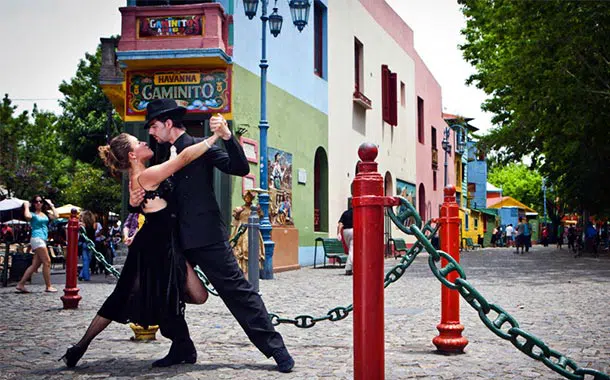
Buenos Aires
A well-known city in Latin America, Buenos Aires, located along the banks of the Rio de la Plata, is the capital of Argentina. In this city history, tradition, culture and modernity blend perfectly creating a unique and unmissable landscape and atmosphere suitable for all tastes of all, even the most extravagant. The history of the city has been mainly characterized by foreign invasions, immigration, various coups and the sad phenomenon of the desaparecidos who have left indelible marks and, still today, recognizable. Walking through the different barrios, administrative subdivisions of the city, it is possible to see with your own eyes the signs of these phenomena and immerse yourself in its rich history.
The Boca neighborhood, for example, is a clear example as it is mainly inhabited by the descendants of the Genoese sailors who immigrated to the city in search of fortune. If you want to immerse yourself in the local culture, tango is certainly the master. If you didn't know, Buenos Aires is the world capital of tango and this traditional dance has become the symbol of Argentine culture all over the world. Don't miss the opportunity to attend a unique show of its kind and, why not, take a lesson to learn a few steps to show off during an evening with friends!
If, on the other hand, you are an art and architecture lover, a visit to the city's famous museums, such as the National Museum of Fine Arts and the Museum of Modern Art (MAMBA), and the residential district of Recoleta are unmissable, which, located in the heart of the city, presents luxurious buildings and houses that are examples of typical local architecture. The city is also known for its lively nightlife and its very tasty cuisine.
Rich History of Buenos AiresBuenos Aires, the vibrant capital of Argentina, boasts a rich history that blends European elegance with Latin American passion. Founded in the early 16th century by Spanish conquistadors, the city has evolved into a cultural melting pot influenced by waves of immigration. From colonial architecture to tango music and art, Buenos Aires preserves its heritage while embracing modernity.
Pleasant Climate and SeasonsBuenos Aires enjoys a temperate climate with distinct seasons offering diverse experiences for visitors. Summers are warm and humid, perfect for exploring parks and outdoor cafes. Winters are mild, ideal for strolling through museums and historic neighborhoods. Spring and autumn bring pleasant temperatures, making it a great time to enjoy outdoor activities.
Top Attractions and Places to Visit in Buenos AiresBuenos Aires is a city brimming with cultural landmarks and attractions. The iconic Plaza de Mayo is the heart of the city, surrounded by historic buildings like Casa Rosada and the Metropolitan Cathedral. Recoleta Cemetery is a must-visit for its elaborate mausoleums, while the colorful neighborhood of La Boca offers tango shows and street art. Don't miss the grand Teatro Colon for world-class opera and ballet performances.
Local Cuisine: Authentic Flavors of Buenos AiresBuenos Aires is a paradise for food lovers, offering a mix of traditional Argentine dishes and international cuisine. Indulge in juicy steaks grilled to perfection, savory empanadas filled with meat or cheese, and decadent dulce de leche desserts. Sip on mate, Argentina's national drink, or enjoy a glass of Malbec wine from nearby vineyards. Visit local markets like San Telmo for fresh produce and artisanal products.
Embark on an Unforgettable Cruise from Buenos AiresTo elevate your Buenos Aires experience, consider booking a cruise departing from this bustling city. Cruises from Buenos Aires offer the opportunity to explore the stunning coastline of Argentina, visit exotic destinations like Patagonia or Antarctica, and witness breathtaking natural wonders. Booking a cruise from Buenos Aires guarantees unforgettable moments and a unique perspective on South America's beauty from the sea.
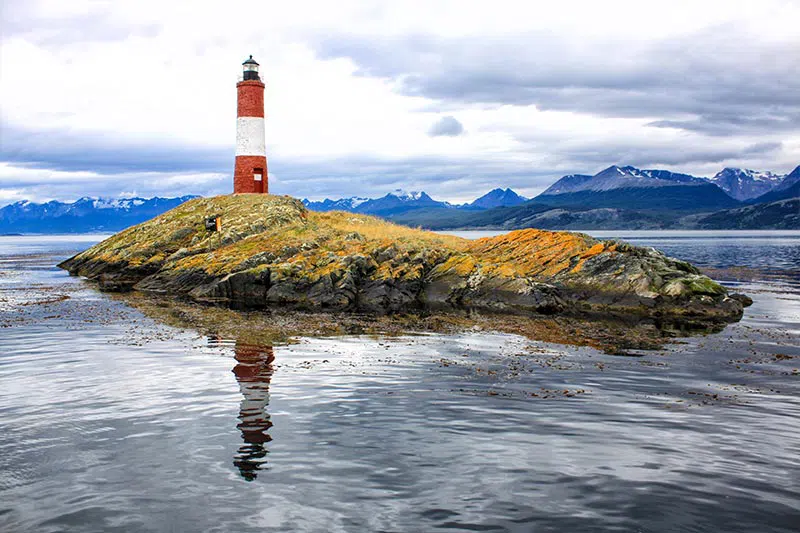
Port Stanley
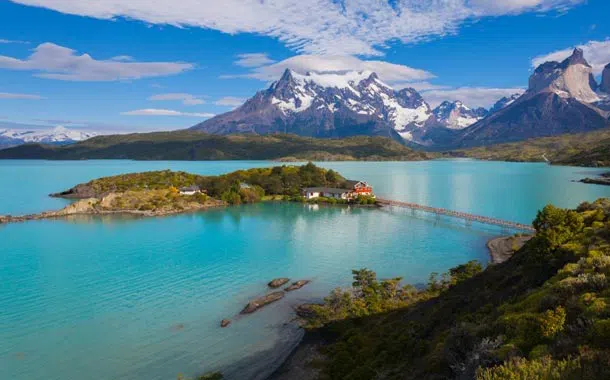
Ushuaia
Known for being the southernmost city in the world, Ushuaia, located on the southern coast of the Isla Grande of Tierra del Fuego, is nestled between the Beagle Channel and the mountains behind it. This mix of mountains and sea creates a unique landscape that will undoubtedly leave you speechless and will allow you to carry out different types of activities from the most relaxing to those that require more effort, but don't worry you will be rewarded by the uniqueness of this landscape!
The name of the city derives from an ancient language, now extinct, traditionally spoken by the local populations, the Yaghan language, and means Bay at the end of the world given its geographical position. Considering that Ushuaia is located in the southern hemisphere, it must be taken into consideration that the seasons are reversed.
If you want to enjoy the beauty of the beaches of Ushuaia, the ideal time to visit the city is from November to March, which correspond to our spring and summer months. I recommend you always keep a plan B in mind because the weather at this time of year changes very quickly and the risk that a sunny day turns into a rainy one is very high! If, on the other hand, you want to reach the city during the winter months, you can devote yourself to winter sports and visit the various museums scattered throughout the city.
Historical Charms of UshuaiaUshuaia, located in Argentina, holds a fascinating history as the southernmost city in the world. Originally established as a penal colony in the late 19th century, Ushuaia has transformed into a thriving hub for adventure tourism and scientific research. The city's past as a remote outpost adds to its allure, with remnants of its penal colony history visible in landmarks like the Presidio.
Diverse Climate of UshuaiaUshuaia experiences a cool-temperate climate influenced by its southern location near the Antarctic Circle. Summers are mild with long daylight hours, perfect for exploring the surrounding mountains and Beagle Channel. Winters bring snowfall and colder temperatures, creating a winter wonderland for skiing and snow activities. The ever-changing weather adds to the charm of this unique destination.
Top Attractions and Places to Explore in UshuaiaUshuaia offers a plethora of attractions that showcase the beauty of Patagonia and Tierra del Fuego. Visit Tierra del Fuego National Park for stunning landscapes, hiking trails, and the End of the World Train. Explore the Maritime Museum to learn about Ushuaia's maritime history and Antarctic expeditions. Don't miss a boat tour to see penguins, sea lions, and glaciers up close in the Beagle Channel.
Local Cuisine: Authentic Flavors of UshuaiaUshuaia's culinary scene highlights fresh seafood from the surrounding waters and traditional dishes influenced by indigenous cultures. Taste king crab, known locally as centolla, grilled Patagonian lamb, and hearty stews like locro. Sample regional specialties such as calafate berry desserts and enjoy a traditional mate tea ceremony. The fusion of flavors reflects the unique heritage of this southern city.
Embark on an Unforgettable Cruise from UshuaiaTo enhance your Ushuaia experience, consider booking a cruise departing from this gateway to Antarctica. Cruises from Ushuaia offer unparalleled opportunities to explore the White Continent, witness majestic icebergs and wildlife like penguins and whales in their natural habitat. Booking a cruise from Ushuaia guarantees an unforgettable journey to one of the most remote and pristine regions on Earth.
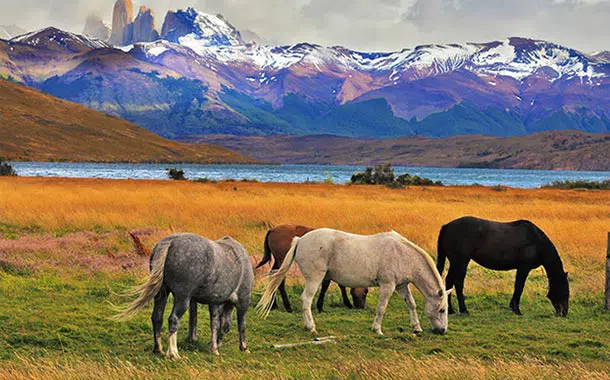
Punta Arenas
Punta Arenas is a small Chilean town located in one of the southernmost areas in the world. Its geographical position, located within the basin of the Río Las Minas river, has meant that the city has been a crossroads of peoples given its long-standing position as a hub for trade between the Atlantic and Pacific Oceans. The importance acquired by the port over the centuries has made trade one of the main sources of sustenance for the city, however, one of the developing sectors is tourism, mainly international. This is mainly due to the beauty of the natural landscape that attracts a large number of tourists every year and to its history rich in different cultures and traditions that blend perfectly creating a perfect combination.
Punta Arenas is also the ideal starting point for discovering the surrounding areas such as: Cape Horn, Tierra del Fuego, the Strait of Magellan and Antarctica. If you are a nature lover and you like to immerse yourself in the surrounding environment, a walk along the Costanera del Estrecho is what is right for you!
This road that runs along the coast, allows you to observe the marine landscape on one side and the unique beauties of the city such as the Monument to the Ancud schooner on the other. If you are a history lover, a visit to the two city museums is an unmissable experience that will allow you to take a dip back in the history of Punta Arenas. The Museo Regional de Magallanes and the Museo Nao Victoria will offer you a unique view of local history since its origins.
Inside the Nao Victoria Museum, you can also observe close copies of some of the ships that crossed the Strait of Magellan, with the possibility of also entering them with the feeling of setting sail together with the old sailors.
Considering the importance of the port, the best way to reach Punta Arenas is on board a cruise ship. Choose a cruise that departs from Punta Arenas or has the city as a stop to enjoy the uniqueness of its panorama and tourist attractions or as a starting point to explore the surrounding areas! What are you waiting for? Visit our profile and choose the cruise that best suits your needs!
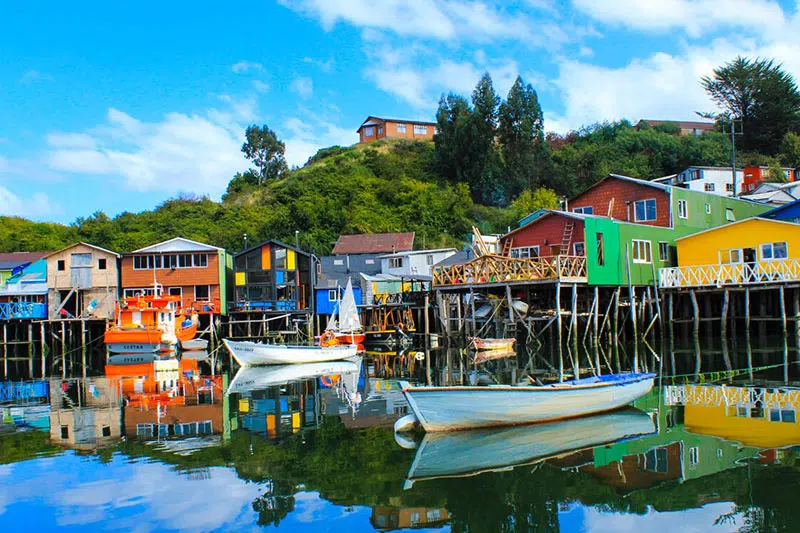
Puerto Montt
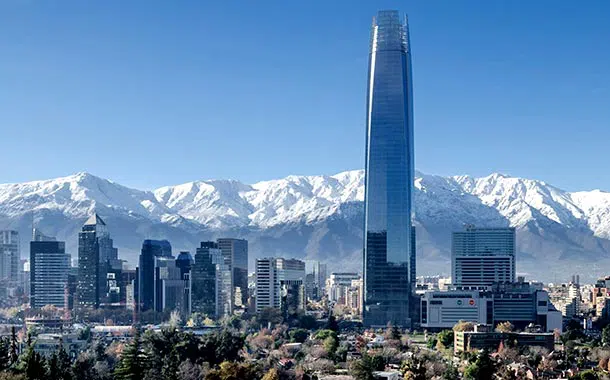
Santiago
Santiago, the capital of Chile, is a vibrant and dynamic city nestled in a valley surrounded by the Andes mountains. Santiago is a city of contrast where modern urban life is perfectly combined with rich history and tradition. The city was founded by Spanish conquistador Pedro de Valdivia in 1541. Over the centuries, Santiago has grown from a colonial outpost to Chile's largest and most important city.
It has become the political, cultural, and economic center of the country. Thanks to its natural landscapes, the city offers many parks and green spaces, including the Parque Metropolitano and the beautiful Cerro Santa Lucía where you can enjoy unique and unforgettable experiences, doing outdoor activities and enojy beautiful panoramic views of the city. Besides its beautiful landscapes, the city is known for its vibrant arts community and frequent cultural festivals.
There are many theaters, museums, and galleries in the city. Notable landmarks include the historic Plaza de Armas, the Palacio de La Moneda (the presidential palace), and the towering Gran Torre Santiago, the tallest building in Latin America.
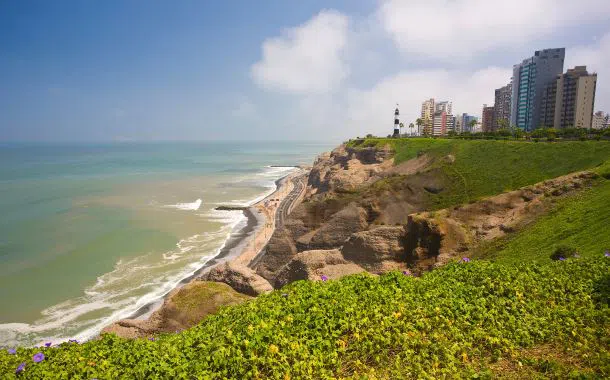
Lima
Located on the Pacific coast of Peru, South America, in a region sheltered from oasis and trade winds, Lima is 12 km from the port of Callao. At the base of the San Cristobal hill, the city is crossed by the Rio Rimac. Called the ‘City of Kings’ by the Spanish conqueror Francisco Pizarro in 1535, Lima was chosen as the capital of the country in 1821, year of its Indipendence. A coastal city that has defended various invasions and welcomed many cultures. On the one hand, the traces of its past are still visible, for example among various monuments and buildings. On the other hand, the city fully assumes its position as a modern Peruvian capital. Developed strongly on industry and tourism, continuing to attract masses, Miraflores and San Isidro are the hub of Lima's social and commercial life. Known for its legendary fog, it has a special charm of colour and animation. Discover its historic center, a great spectacle of colonial architecture, including ‘Paseo de la Republica’, San Martin Square, Plaza de Armas and surrounding monuments: the Government Palace, the Cathedral, the Archbishop's Palace, the Forsaken train station, and the Moorish-Spanish colonial houses. Decorated with beautiful carved wooden balconies along the old streets, you will be captivated by the combination of its past and 21st century modernity. Strolling through the historic center, you will taste traditional dishes and be greeted by a truly warm population! Between May and mid-September, the city of Lima is prone to humidity and clouds. November to April are the best months to visit the capital, from January to March the heat is very high.Located on the coast of the Pacific in Peru, South America, in a region sheltered from oases and trade winds, Lima is 12 km from the port of Callao. At the foot of the San Cristobal hill, the city is crossed by the Rimac River. Called the "City of Kings" by the Spanish conqueror Francisco Pizarro in 1535, Lima was chosen as the capital since the country's independence in 1821. Coastal city that has defended the various invasions and welcomed many cultures, it bears the traces of the past (including various monuments and buildings) and fully assumes its position as the Peruvian capital. Strongly developed in the industry and tourism sector, continuing to attract the masses, Miraflores and San Isidro are the focus of Lima's social and commercial life. Known for its legendary fog, it has a special charm, made up of colors and animations. You will discover its historic center, a great show of colonial architecture, including "Paseo de la Republica", Plaza San Martin, Plaza de Armas, and surrounding monuments: the Government Palace, the Cathedral, the Archbishop's Palace, the Forsaken railway station, and the colonial houses in Moorish-Spanish style. Decorated with splendid carved wooden balconies, along the old streets, they will fascinate you thanks to its elusive mix of Spanish history and the modernity of the 21st century. Strolling through the historic center, you will taste traditional dishes and be welcomed by a truly warm population! Between May and mid-September, the city of Lima is subject to humidity and clouds. From November to April are the best months to visit the capital, from January to March the heat is very high.

Lima
Located on the Pacific coast of Peru, South America, in a region sheltered from oasis and trade winds, Lima is 12 km from the port of Callao. At the base of the San Cristobal hill, the city is crossed by the Rio Rimac. Called the ‘City of Kings’ by the Spanish conqueror Francisco Pizarro in 1535, Lima was chosen as the capital of the country in 1821, year of its Indipendence. A coastal city that has defended various invasions and welcomed many cultures. On the one hand, the traces of its past are still visible, for example among various monuments and buildings. On the other hand, the city fully assumes its position as a modern Peruvian capital. Developed strongly on industry and tourism, continuing to attract masses, Miraflores and San Isidro are the hub of Lima's social and commercial life. Known for its legendary fog, it has a special charm of colour and animation. Discover its historic center, a great spectacle of colonial architecture, including ‘Paseo de la Republica’, San Martin Square, Plaza de Armas and surrounding monuments: the Government Palace, the Cathedral, the Archbishop's Palace, the Forsaken train station, and the Moorish-Spanish colonial houses. Decorated with beautiful carved wooden balconies along the old streets, you will be captivated by the combination of its past and 21st century modernity. Strolling through the historic center, you will taste traditional dishes and be greeted by a truly warm population! Between May and mid-September, the city of Lima is prone to humidity and clouds. November to April are the best months to visit the capital, from January to March the heat is very high.Located on the coast of the Pacific in Peru, South America, in a region sheltered from oases and trade winds, Lima is 12 km from the port of Callao. At the foot of the San Cristobal hill, the city is crossed by the Rimac River. Called the "City of Kings" by the Spanish conqueror Francisco Pizarro in 1535, Lima was chosen as the capital since the country's independence in 1821. Coastal city that has defended the various invasions and welcomed many cultures, it bears the traces of the past (including various monuments and buildings) and fully assumes its position as the Peruvian capital. Strongly developed in the industry and tourism sector, continuing to attract the masses, Miraflores and San Isidro are the focus of Lima's social and commercial life. Known for its legendary fog, it has a special charm, made up of colors and animations. You will discover its historic center, a great show of colonial architecture, including "Paseo de la Republica", Plaza San Martin, Plaza de Armas, and surrounding monuments: the Government Palace, the Cathedral, the Archbishop's Palace, the Forsaken railway station, and the colonial houses in Moorish-Spanish style. Decorated with splendid carved wooden balconies, along the old streets, they will fascinate you thanks to its elusive mix of Spanish history and the modernity of the 21st century. Strolling through the historic center, you will taste traditional dishes and be welcomed by a truly warm population! Between May and mid-September, the city of Lima is subject to humidity and clouds. From November to April are the best months to visit the capital, from January to March the heat is very high.
